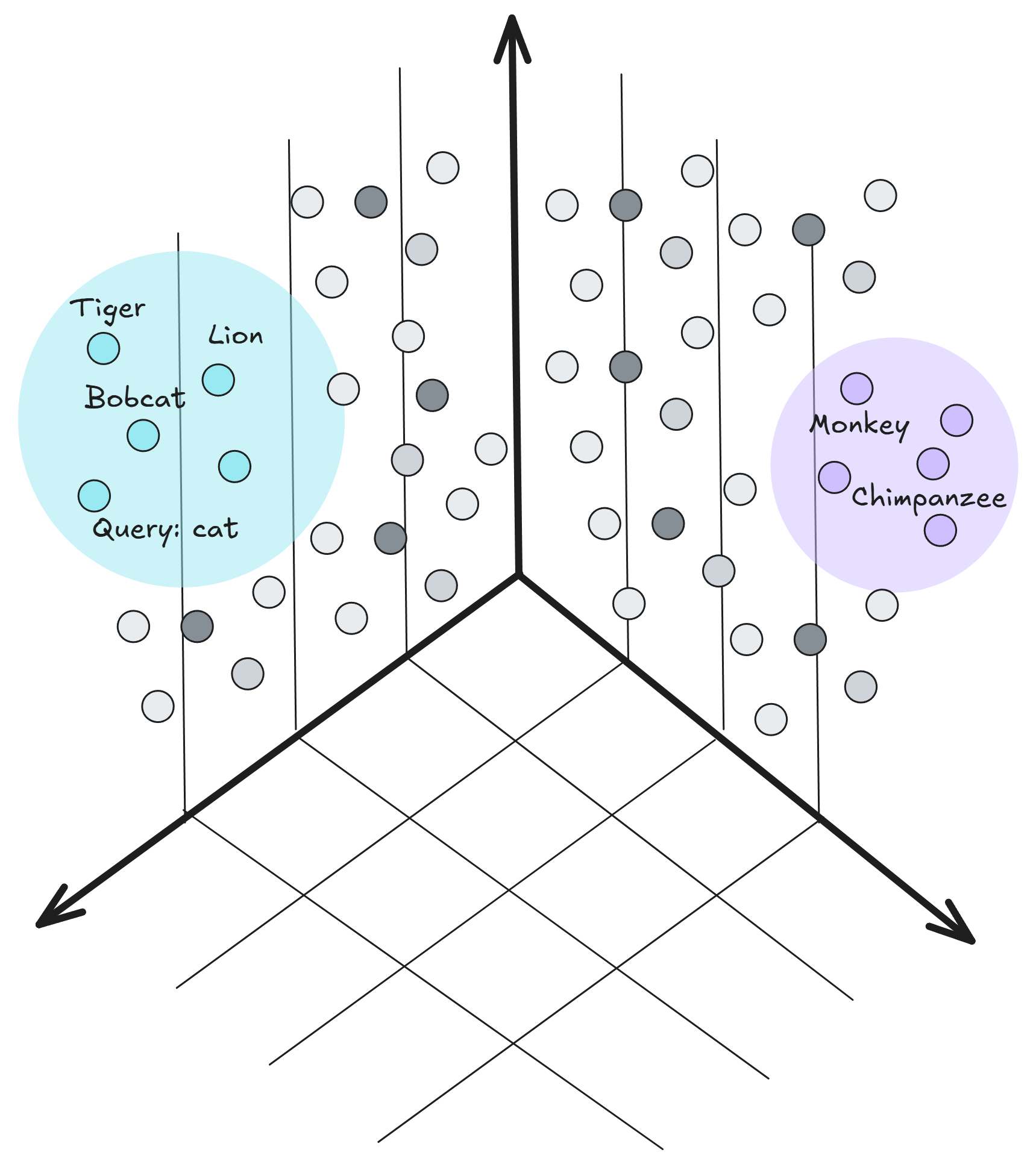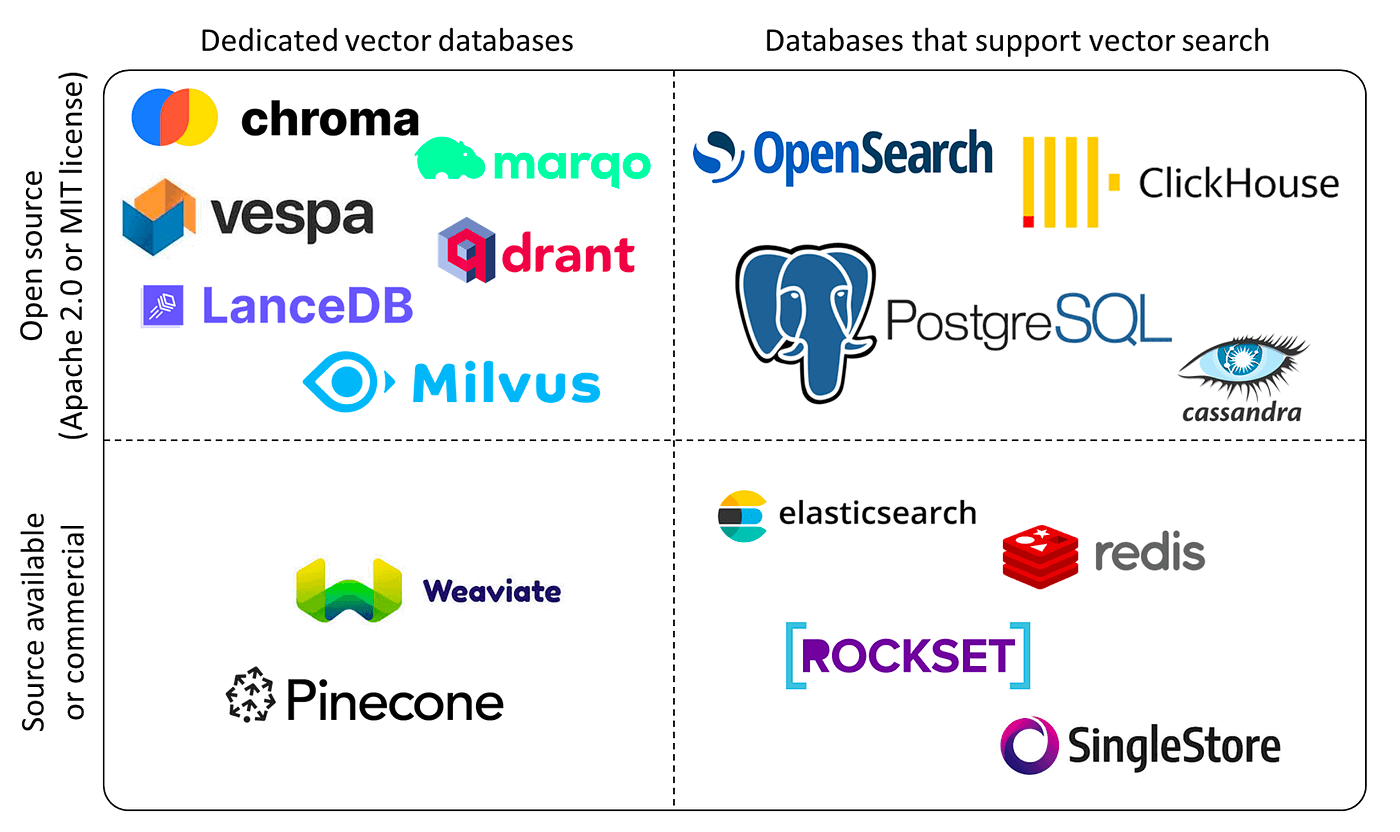What is Vector Search? A Concise Guide
 Milan Jovanović
Milan Jovanović
Vector search is changing how we find information. Unlike old search methods that look for exact words, vector search finds content based on meaning. This makes search results more helpful and human-like.
When you search for "quick healthy breakfast ideas," vector search can find articles about "nutritious morning meals" even if they don't use your exact words. This happens because vector search understands what you mean, not just what you type.
In this week's newsletter, we'll break down how vector search works and why it's important.
Understanding Vector Embeddings
At the heart of vector search are vector embeddings. These are lists of numbers that represent data. But how do we get from words or images to numbers?
Here's how it works:
We feed text, images, or other data into a large language model (LLM)
The LLM turns each piece of data into a list of numbers (a vector)
These numbers capture the meaning of the data
Similar things get similar number patterns

Think of each number in the vector as describing one aspect of the data. With hundreds or thousands of these numbers, vectors can capture complex meanings and relationships.
For example, in vector form, the words "lion" and "bobcat" would have similar number patterns because they refer to similar animals. Meanwhile, "cat" would have a different pattern, though still somewhat similar since it's also a feline.
How Vector Search Works
When you search using vector search:
Your search question gets turned into a vector
The system compares this vector to all the vectors in its database
It finds the vectors that are most similar to your search vector
It returns the data connected to those similar vectors
To find similar vectors, the system measures how close they are to each other. Think of each vector as a point in space - the closer two points are, the more similar their meanings.

Vector Databases
To make vector search work well with lots of data, we need special storage systems called vector databases. These databases are built to store and quickly search through millions or billions of vectors.
Vector databases do more than just store vectors - they organize them in smart ways that make searching faster. They use special methods called "Approximate Nearest Neighbor" (ANN) algorithms that can find similar vectors without checking every single one in the database.

Source: What are Vector Databases? A Beginner's Guide
These databases also store the original content along with its vector, so when you get search results, you see the actual text, images, or other data you were looking for. Popular vector databases include Weaviate, Pinecone, and Qdrant. But you can also turn PostgreSQL into a vector database using the pgvector extension.
The combination of vector embeddings and vector databases makes search extremely fast, even with millions of items to search through. This speed makes vector search practical for real-world applications where users expect instant results.
Key Differences from Traditional Search
Traditional keyword search works like this:
You type "red shoes"
The system finds pages with the words "red" and "shoes"
Results that mention these words more often rank higher
This approach has problems:
It misses related terms ("scarlet footwear")
It doesn't understand context
It can't handle questions well
An improvement to keyword search is full-text search, which looks at the whole text of documents. However, this still has some shortcomings that vector search solves.
Vector search fixes these issues by focusing on meaning rather than exact words. It can:
Find content with related concepts
Understand the context of your search
Return helpful results even for complex questions
This is why vector search powers many modern AI applications. It helps chatbots find relevant information and makes recommendation systems more accurate.
Summary
Vector search represents a major step forward in how computers understand and retrieve information. By converting data into number patterns that capture meaning, vector search can find connections that keyword search would miss.
This technology is behind many of the smart search features we now take for granted - from finding similar products in online stores to helping AI assistants answer our questions. As AI continues to advance, vector search will play an increasingly important role in helping us navigate the growing sea of digital information.
While not perfect, vector search bridges the gap between how computers store data and how humans think about meaning - making our digital tools more helpful and intuitive to use.
In a future newsletter, we'll dive into the practical side of vector search. You'll learn how to implement your own vector search system using popular tools and libraries, with step-by-step code examples and best practices.
That's all for today.
See you next week.
Whenever you're ready, there are 4 ways I can help you:
(NEW) Pragmatic REST APIs: You will learn how to build production-ready REST APIs using the latest ASP.NET Core features and best practices. It includes a fully functional UI application that we'll integrate with the REST API.
Pragmatic Clean Architecture: Join 4,000+ students in this comprehensive course that will teach you the system I use to ship production-ready applications using Clean Architecture. Learn how to apply the best practices of modern software architecture.
Modular Monolith Architecture: Join 1,800+ engineers in this in-depth course that will transform the way you build modern systems. You will learn the best practices for applying the Modular Monolith architecture in a real-world scenario.
Patreon Community: Join a community of 1,000+ engineers and software architects. You will also unlock access to the source code I use in my YouTube videos, early access to future videos, and exclusive discounts for my courses.
Subscribe to my newsletter
Read articles from Milan Jovanović directly inside your inbox. Subscribe to the newsletter, and don't miss out.
Written by

Milan Jovanović
Milan Jovanović
I'm a seasoned software architect and Microsoft MVP for Developer Technologies. I talk about all things .NET and post new YouTube videos every week.